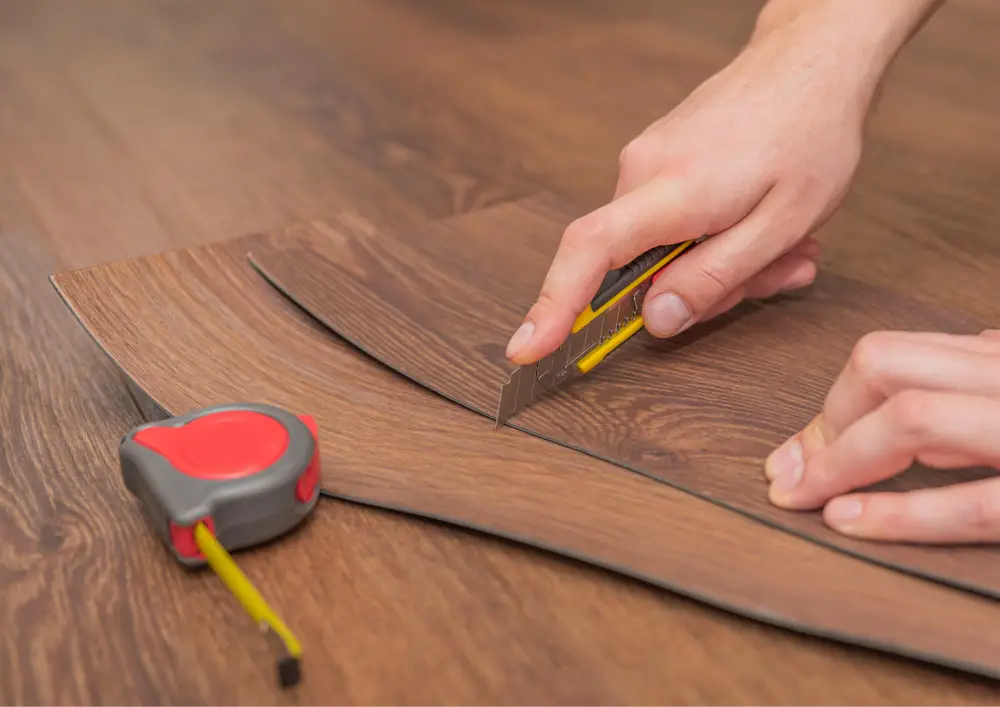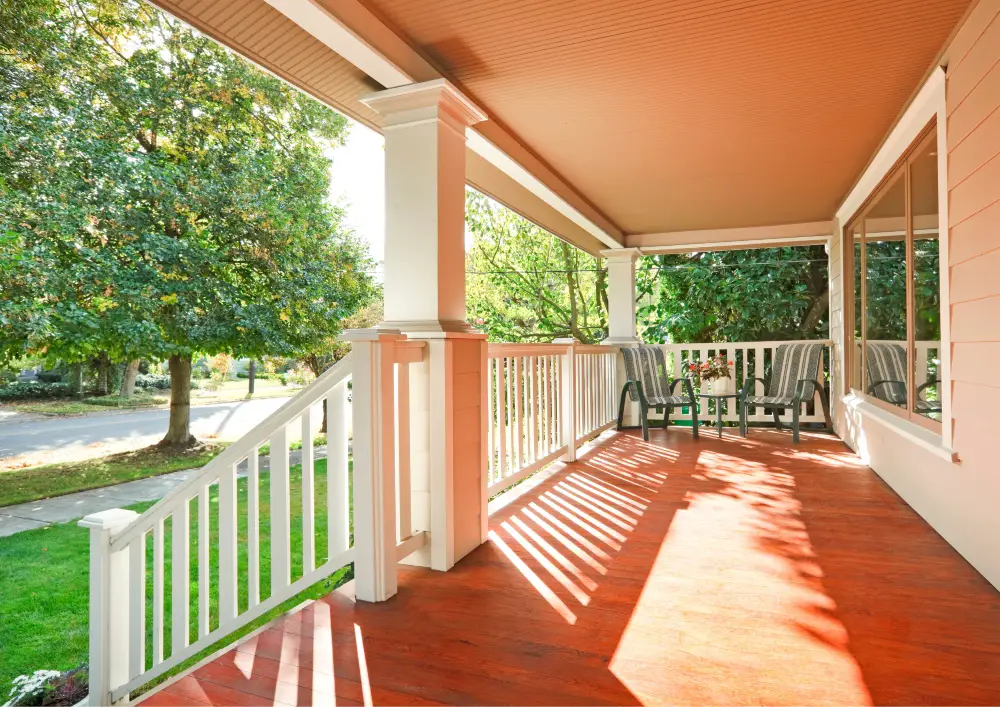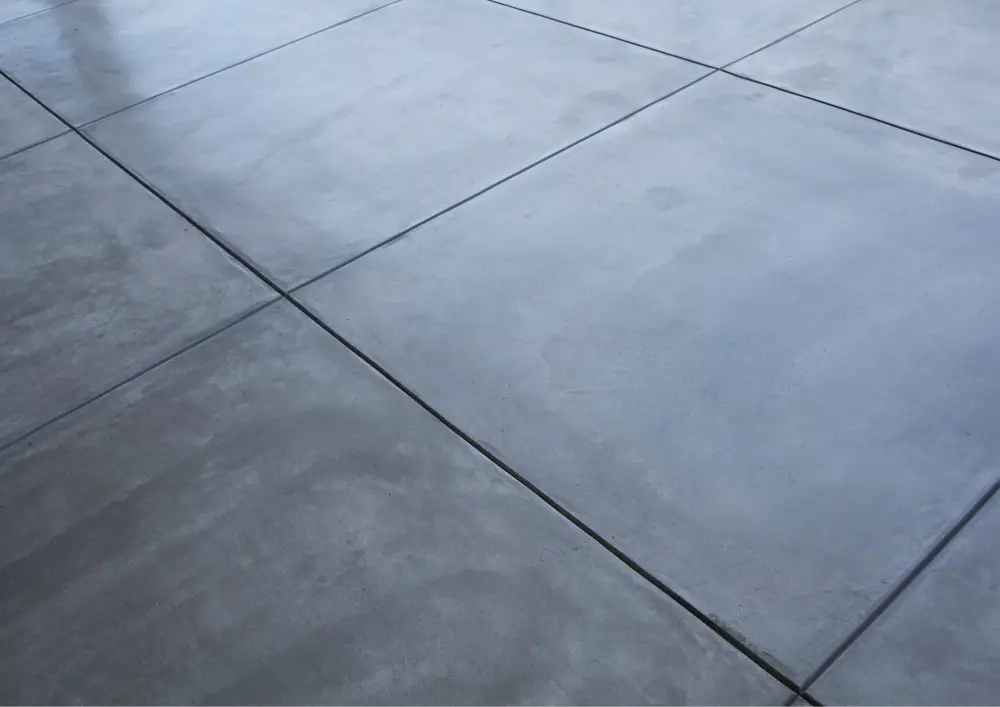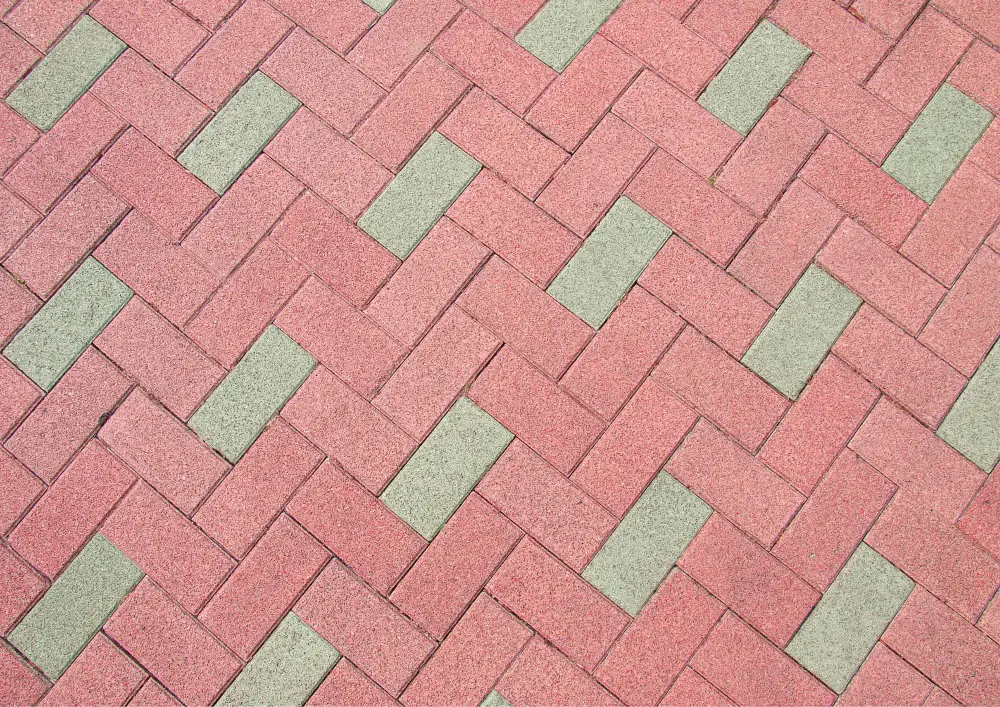Deciding on the right flooring for your porch can make or break its overall appeal. This article explores different materials like PVC, wood, composite, stone, concrete, and brick to help you choose your outdoor sanctuary.
Contents
The Best Porch Flooring Options: Which One is Right for You?
We break down the usual materials you can use for your porch. Read on to learn why wood or PVC porch flooring is great and what it takes to keep them clean.
Polyvinyl Chloride (PVC)

Overview
When it comes to choosing porch flooring, PVC or Polyvinyl Chloride is an option that’s gaining traction. One of the standout features of PVC is its strength. It’s made from a plastic resin engineered for toughness, making it a long-lasting choice for your porch. Its lightweight nature also makes installation a breeze, even for DIY enthusiasts.
Now, let’s talk about moisture. Unlike wood, which can rot, or metal, which can rust, PVC is immune to moisture damage. The porch material is non-porous. Water simply can’t penetrate it, making it ideal for homes in areas with high rainfall or humidity.
While the material has much to offer, there are drawbacks to this porch flooring option. PVC tends to be more expensive than other common porch flooring options like wood or concrete. Moreover, PVC can get pretty hot when exposed to direct sunlight for a long time. This happens because this material is plastic, which absorbs heat more quickly than materials like wood or stone.
As for the look, some people feel that PVC needs to have the warm, natural appearance that other materials like wood can provide. While you can find PVC in various colours and styles, it may only partially capture the traditional charm of a wooden porch.
Pros
- Strong and durable
- Moisture-resistant
- Easy to install
- Wide range of colours and styles
Cons
- Higher cost than some materials
- Not a natural look
- It can get hot in the sun
- It may look less authentic over time
Maintenance
Keeping PVC porch flooring clean is pretty simple. You can use mild soap and water for basic cleaning. For tougher stains, you might need a specialized cleaner designed for PVC. Regarding tools, a soft-bristle broom and a mop are usually enough.
A garden hose can be used for a quick rinse. Be cautious with abrasive cleaners; they can scratch the surface. Always check the manufacturer’s guidelines before using any new cleaning products.
Wood Porch Flooring

Overview
Wood is often the first thing that comes to mind regarding porch flooring. It’s like that warm, inviting friend who always makes you feel at home. There’s a timeless charm to wooden porches that is hard to replicate with other materials. Whether it’s cedar, pine, or exotic hardwood, each type of wood has a unique character, giving your porch its personality.
Now, what makes wood so appealing? For starters, wood has natural insulating properties. It keeps your porch cooler in the hot summer and offers warmth during the colder seasons. The texture of the wood is also a sensory delight, from the subtle grain patterns to the soft, earthy aroma. Walking on wooden porch flooring has a tactile satisfaction that many find comforting.
But it’s not just the look and feel of the natural porch flooring. Wood is also quite versatile. You can stain, paint, or even leave it natural for a more rustic appearance. Wood is like a blank canvas you can decorate for your porch aesthetic.
However, wood has its downsides, too. For one, it’s susceptible to the elements. Rain, snow, and excess humidity can cause wood to rot over time. It also attracts insects like termites, which can weaken its structure. Plus, wood requires regular upkeep to maintain its good looks. Sealants and stains are often necessary to keep it from deteriorating.
Still, for many homeowners, the allure of wood is worth these challenges. It has a natural beauty and versatility that resonates with people emotionally. This emotional pull often outweighs its drawbacks, making wood a popular choice for porch flooring.
Pros
- Natural and warm appearance
- Versatile for staining and painting
- Insulating properties keep the porch comfortable
- Wide range of wood types to suit different tastes
Cons
- Can rot when exposed to moisture
- Attracts insects like termites
- Needs regular maintenance
- May splinter or crack over time
Maintenance
Taking care of a wood porch requires some effort, but it’s worth it. For cleaning, a mild soap and water usually do the trick. A soft-bristle broom lets you sweep dust and dirt without harming the wood. Once a year, consider a deeper clean with a pressure washer set on a low setting to avoid damaging the wood.
Sealing is important to protect against moisture and insects. A good practice is to apply sealant once every one to two years. Use a brush or roller to spread the sealant onto your floor.
Stains and paints enhance the look and add an extra layer of protection. Always remember to check the weather before you start painting or staining. You want at least two days of dry weather for the best results.
Inspect for any wear, rot, or insect damage between sealants and cleaning. If you catch issues early, you can often fix them with simple repairs. You might need sandpaper, wood filler, and a basic toolkit for tightening loose boards or nails.
Composite

Overview
Composite is like the new kid on the block that everyone is curious about. It combines the best of both worlds and combines wood fibres and plastics. If you want the look of wood without all the upkeep, composite might be your new best friend. Many homeowners choose this material because it offers the charm of wood but is easier to take care of.
So, why is composite gaining so much attention? For starters, it’s highly durable. Because it’s engineered from a blend of materials, it resists many problems plaguing traditional wood, like rotting, splintering, and warping. It’s as if the composite learned from the wood’s vulnerabilities and decided to improve.
Another advantage is its moisture resistance. While wood can absorb water and eventually rot, composite is designed to be water-resistant. This feature makes it ideal for regions that experience a lot of rain or humidity. The material has a protective layer acting as a shield against water damage.
But composite has its drawbacks. One issue is cost. Good quality composite can be more expensive upfront than traditional wood. Another point is that it may not feel as natural as wood underfoot or offer the same tactile pleasure.
When it comes to appearance, composite has come a long way. Earlier versions looked artificial, but modern composites offer a range of colours and textures that can closely mimic different types of wood. Despite its pros and cons, composite is a strong contender in porch flooring, offering a durable and low-maintenance alternative to traditional materials.
Pros
- Highly durable and long-lasting
- Moisture-resistant, good for wet climates
- Low maintenance needs
- It comes in various colours and textures
Cons
- It can be more expensive upfront
- It might not feel as natural as wood
- Limited repair options; usually requires board replacement
- Some find it less visually appealing than natural wood
Maintenance
Taking care of composite porch flooring is fairly easy. A simple sweep with a soft-bristle broom should be done for daily cleaning. A mix of mild soap and water works well for a deeper clean. You can use a soft cloth or sponge mop to apply the mixture.
Stains are generally easier to handle with composite than with wood. It will not soak up coffee, soda, or other colourful stains. For tougher stains, a specialized composite cleaner may be necessary. Always test a small area first to ensure it doesn’t affect the colour.
Composite doesn’t need sealing or staining, which reduces the chores. But it’s still good to inspect the boards once a year. Look for any signs of wearing on any of the boards. Unlike wood, you can’t sand down or repair a small area. You usually have to replace the whole composite board if the damage is too noticeable.
No need for specialized tools here. A regular mop, a bucket, and perhaps a garden hose are all you need to keep composite porch flooring in top shape. Always follow the manufacturer’s guidelines for specific care instructions.
Stone

Overview
Stone porch flooring for a porch is like that timeless piece of jewellery you can always count on—it’s classic, elegant, and elevates everything around it. Many homeowners opt for stone because of its enduring beauty and sophistication. Options like slate, granite, and limestone bring unique texture and colour, making your porch a unique space.
Why is stone such a beloved choice? Its durability is a big selling point. Stone is hard to scratch, chip, or dent, making it great for high-traffic areas. It’s like the strong, silent flooring, standing up to the test of time and elements with little fuss. Stone is also excellent at handling weather changes. Unlike wood, which can rot, or composite, which might fade, stone remains largely unaffected by the elements.
That said, stone does have its challenges. It can be cold to the touch, especially during winter, making it less cozy than other options. Stone can also be slippery when wet, so choosing a textured finish is important for better grip.
Moreover, the stone is often more expensive, both for the material itself and for installation. It’s a significant investment, but many homeowners find it worth the price for the aesthetic and durability it provides.
Finally, while stone offers an array of natural colours and textures, it may provide a different warm, inviting vibe than materials like wood. But for those seeking a look of timeless elegance, stone porch flooring could be the perfect fit for your porch.
Pros
- Highly durable, stands up to wear and tear
- Resistant to weather changes
- Adds an elegant, classic look
- Wide variety of stone types and finishes
Cons
- It can be cold underfoot, especially in winter
- Might be slippery when wet
- Higher cost for material and installation
- It may not offer a warm, cozy feel
Maintenance
Stone porch flooring doesn’t ask for much in the way of upkeep. For daily cleaning, sweeping with a soft-bristle broom is usually enough. You can use a damp mop with a mild detergent for a deeper clean. Just be sure to avoid acidic cleaners; they can etch the stone.
Spills should be cleaned quickly to avoid staining, especially on more porous stones like limestone. A special stone cleaner may be needed if you get a stain. Always test a small hidden area first.
Sealing is key for some types of stone. A quality sealant can protect against stains and make cleaning easier. Get quality sealants that create a long-lasting seal on the porch flooring.
As for tools, you will only need a mop, a bucket, and perhaps a specialized stone cleaner for stubborn stains. It’s always a good idea to consult the manufacturer’s guidelines for specific care tips.
Concrete

Overview
Concrete porch flooring for porches is like that reliable friend who’s always got your back. It’s sturdy, straightforward, and offers a kind of raw, industrial chic that many find appealing. Gone are the days when concrete was just a dull grey slab; now, it can be stained, stamped, and textured to fit a range of styles, from modern to rustic.
So, why do people go for concrete? One reason is its durability. Concrete is incredibly tough, able to withstand heavy foot traffic, furniture, and even the occasional dropped tool without showing signs of wear. It’s the kind of porch flooring that handles life’s ups and downs without much fuss.
Another plus is that concrete is relatively affordable, especially compared to stone or high-end composite options. This is the porch flooring option when the budget is tight.
However, concrete has its share of challenges, too. In cold weather, it can feel quite chilly underfoot. And if you love the natural, warm look of wood or the elegance of stone, concrete might give you a different vibe.
It’s also worth mentioning that concrete can crack over time, especially if the ground beneath it shifts. This means you might have to deal with repairs down the line.
Still, for those who appreciate its straightforward appeal and toughness, concrete makes a compelling option for porch flooring. It is the flooring you want if budget is an issue.
Pros
- Highly durable and can handle heavy use
- Low-cost material and installation
- Versatile in design, it can be stained or textured
- Low maintenance needs
Cons
- It can feel cold and hard underfoot
- It may not offer a warm or elegant vibe
- Susceptible to cracking over time
- It needs sealing to resist moisture and stains
Maintenance
Taking care of concrete is simple. For daily cleaning, a quick sweep is usually enough. For a more thorough clean, a mop and mild detergent work well. Make sure to rinse thoroughly to remove any soap residue.
Sealing is important for concrete porches. A good sealant protects against moisture and makes the surface easier to clean. You’ll need to reseal every few years, depending on wear and the quality of the sealant.
If you do get a crack or chip, repair kits are available. These typically include a concrete patch mix and sometimes a sealant. Just clean the area, apply the patch, and let it dry before sealing.
For maintenance, you’ll need a broom, a mop, mild detergent, and a sealant. A concrete patch kit will be useful if you need to make repairs.
Brick

Overview
Brick flooring for a porch is like that vintage classic car in your neighbour’s driveway—it’s got a timeless appeal and a charm that never seems to fade. When you see a brick porch, it often evokes feelings of tradition, stability, and warmth. Brick has existed for centuries, and its enduring quality speaks for itself.
Why do people love brick? One big reason is its unique look. No two bricks are the same, giving your porch a distinct, handcrafted appearance. It’s as if each brick tells its own story, adding layers of character to your outdoor space.
Brick is also tough in the face of weather changes. It can handle rain, snow, and sun without losing its good looks. It’s like the flooring version of a seasoned traveller—well-equipped to handle various conditions with grace.
But brick isn’t without its quirks. It’s porous, meaning it can absorb moisture and might need to be sealed to prevent damage. The uneven surface can make moving furniture around or walking harder if you have mobility issues.
Cost is another factor to consider. Brick isn’t the cheapest option, especially when you factor in the installation cost, which usually requires a professional.
Overall, brick offers a mix of visual charm, historical allure, and durability. For those who love the look and don’t mind the extra care it needs, brick can make your porch a memorable and inviting extension of your home.
Pros
- Timeless, classic look
- Durable and weather-resistant
- Unique, handcrafted appearance
- Adds value to your home
Cons
- Porous material absorbs moisture
- Uneven surface can be hard to navigate
- More expensive than some other options
- Usually requires professional installation
Maintenance
Taking care of a brick porch is easy but needs some attention. For regular cleaning, sweeping with a soft-bristle broom works well. For deeper cleaning, you can use a hose or a pressure washer in a gentle setting.
Sealing is important for brick floors. A good sealant can help prevent moisture damage and make the bricks easier to clean. Depending on the sealant used and local weather conditions, you must reseal every 2-4 years.
If a brick becomes damaged or loosened, you can replace just that brick instead of redoing the whole floor. You’ll need basic tools like a chisel, hammer for removal, and mortar to set the new brick in place.
For your maintenance toolkit, consider having a broom, hose, pressure washer, sealant, and basic tools for any brick replacements. Always check the manufacturer or installer guidelines for more specific care instructions.
Conclusion
Choosing the right flooring for your porch is a big decision. Each material has pros and cons, from the modern appeal of composite to the timeless elegance of stone. Your choice will depend on climate, budget, and personal style. While some options require more upkeep, others are nearly maintenance-free.
Whether you love the warm touch of wood or the industrial vibe of concrete, there’s something for everyone. Remember, your porch is an extension of your home, so pick a material that makes it feel complete and inviting.



